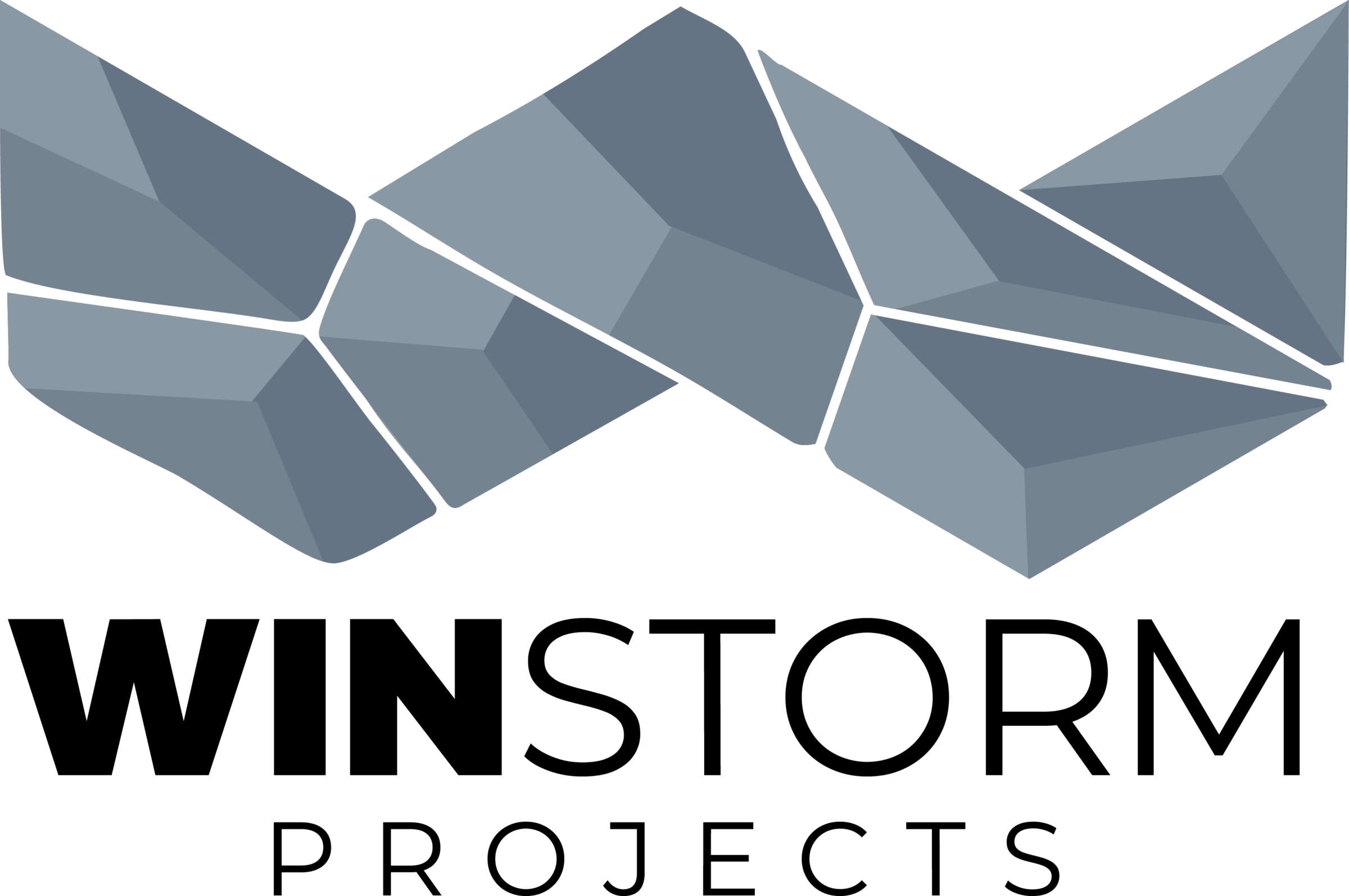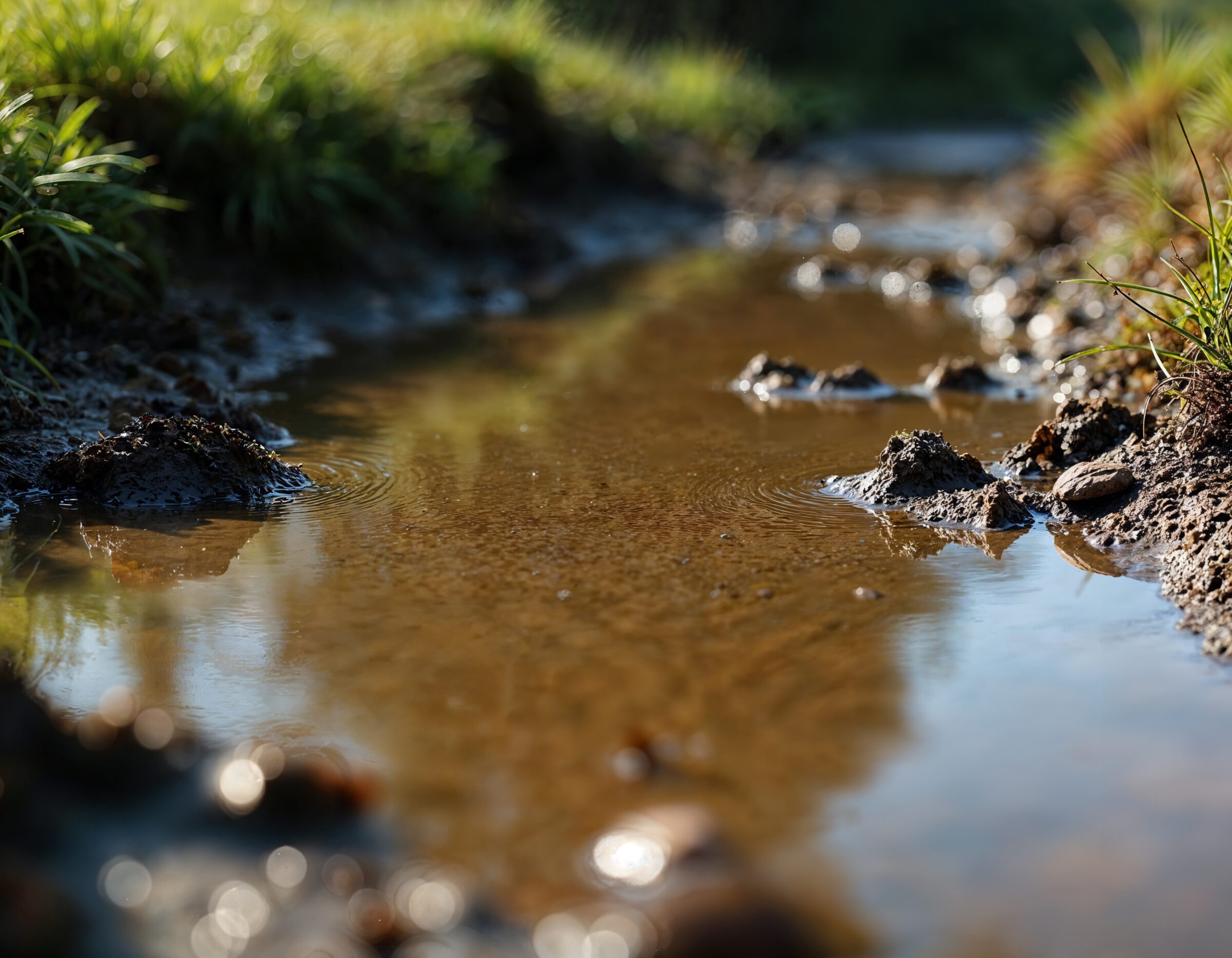Nothing ruins a beautiful outdoor space faster than poor drainage. Standing water can turn your lawn into a muddy mess, lead to soil erosion, and even threaten your home’s foundation. Without proper drainage, excess water can damage plants, make patios and walkways unusable, and create breeding grounds for pests.
Fortunately, there are effective solutions to keep your yard dry and functional. Whether your drainage issues stem from poor soil, improper grading, or blocked systems, this guide will help you identify the problem and choose the best fix.

Why Does Yard Flooding Happen?
Several key factors contribute to yard drainage problems:
- Poor soil drainage: Heavy clay soil , common in Guelph, traps water instead of allowing it to absorb.
- Improper grading: If your yard slopes toward your home instead of away, water will pool instead of draining properly.
- Clogged drainage systems: Blocked gutters and drains prevent water from flowing away, leading to flooding.
- Heavy rain & seasonal changes: Periods of intense rain can overwhelm drainage systems, especially in poorly graded yards.
Understanding what’s causing the issue is the first step in finding the right solution.
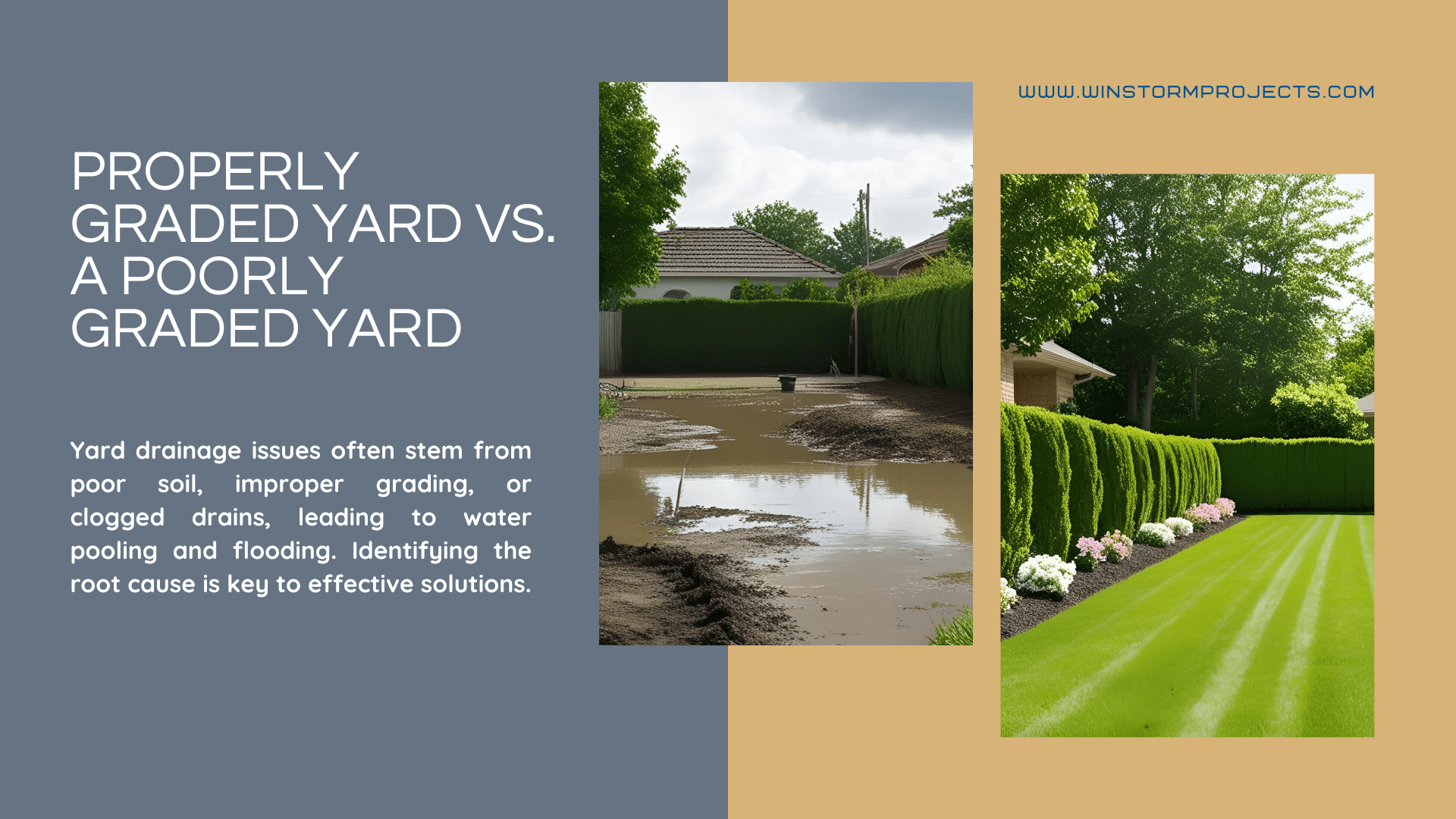
Common Yard Drainage Problems
Surface Water Accumulation
If water collects on your lawn after it rains, the problem likely lies with poor grading or compacted soil. This can create muddy patches and damage grass.
Solution: Installing surface drainage systems like channel drains or adjusting yard grading can prevent standing water.
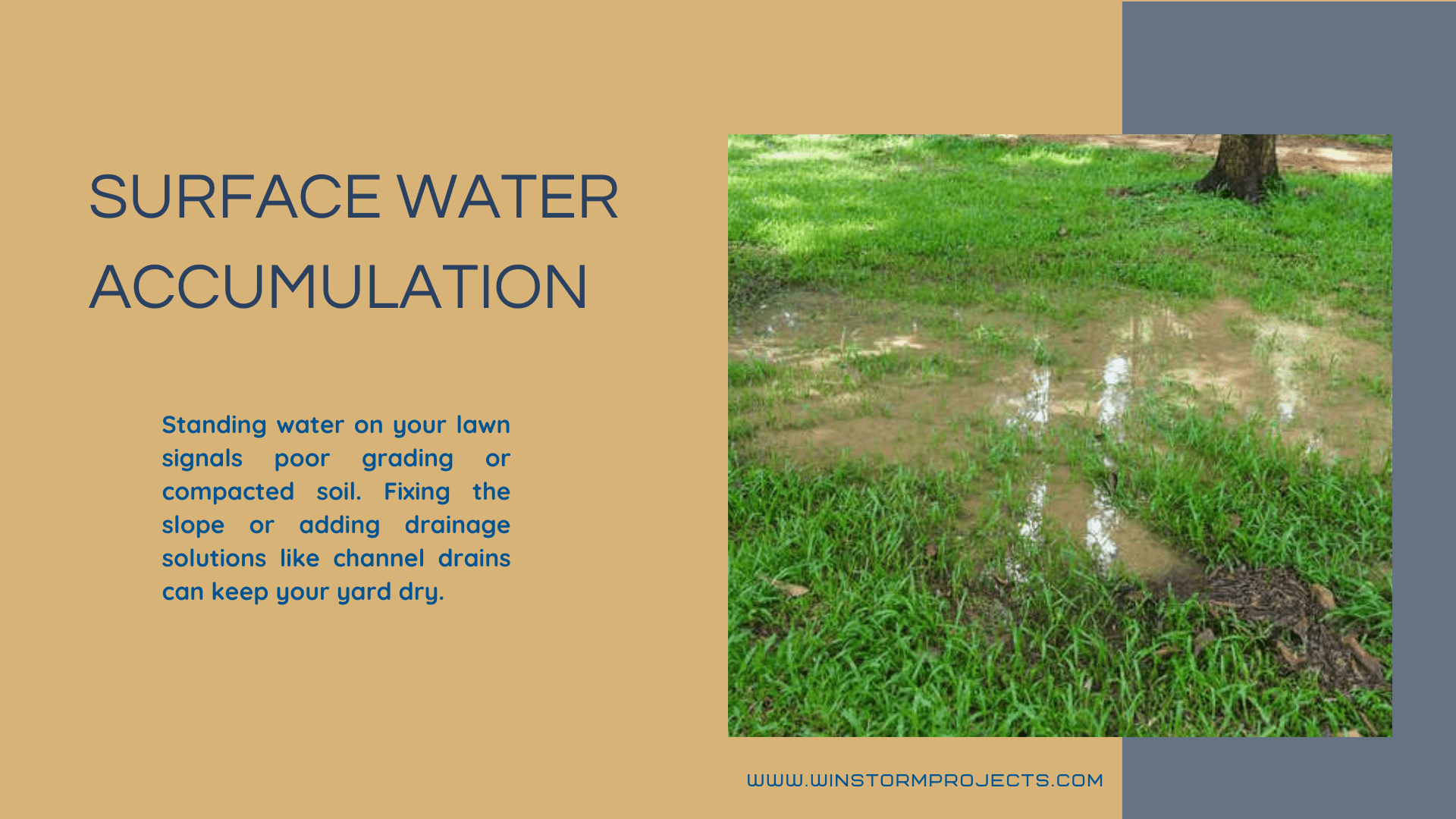
Subsurface Water Issues
Some yards hold excess moisture below the surface, causing plants to suffer and even leading to basement leaks. This is common in clay-heavy soil.
Solution: French drains or weeping tile systems can redirect groundwater before it becomes a problem.
Best Solutions for Yard Drainage Problems
1. Improve Soil Drainage
Amending your soil with organic matter or sand can help water drain more effectively. Aerating compacted soil also prevents excess moisture from sitting on the surface.
2. Install a French Drain
A French drain consists of a perforated pipe buried in gravel, designed to channel water away from problem areas. This is an excellent solution for yards with persistent wet spots.
3. Use Dry Wells
A dry well is an underground basin that collects excess water and slowly disperses it into the soil. This is especially useful in areas with heavy clay where water has trouble absorbing.
4. Adjust Grading & Sloping
Regrading your yard ensures water flows away from your home instead of pooling around the foundation. Even small slope adjustments can make a big difference.
5. Install Channel Drains
For hard surfaces like patios, driveways, and walkways, channel drains prevent water from pooling and direct it toward proper drainage areas.
6. Create a Rain Garden
A rain garden is a low-lying area planted with deep-rooted, water-absorbing plants. This eco-friendly solution manages excess runoff while enhancing your landscape.
DIY vs. Professional Drainage Installation
When dealing with yard drainage issues, you have two options: tackling the problem yourself or hiring a professional.
DIY Drainage Fixes
- Grading adjustments: Small grading fixes can be done with basic landscaping tools.
- Clearing gutters and drains: A simple but crucial step in preventing water buildup.
- Adding gravel or organic matter: Helps improve soil drainage in small problem areas.
Pros: Cost-effective, manageable for minor issues, and a learning opportunity.
Cons: Requires time, effort, and may not solve severe problems.
When to Hire a Professional
Some drainage problems require expertise to ensure a long-term solution. You should consider professional help if:
- Your backyard floods frequently, even after minor fixes.
- Grading issues are complex or require heavy equipment.
- You need a large-scale hardscaping like a French drain or weeping tile.
- Basement leaks are becoming a concern.
Hiring a landscaper or drainage expert ensures that your project is completed efficiently, preventing costly mistakes. Proper drainage not only protects your home but also helps your outdoor space thrive by reducing excess moisture that can damage plants and paver installations.
Pros: Faster results, expert recommendations, and warranty-backed solutions.
Cons: Higher upfront cost but greater long-term savings.
A professional can also assess whether lighting and other hardscaping elements can enhance your yard’s appeal while maintaining effective drainage solutions. Investing in expert installation ensures your outdoor space remains both functional and visually appealing for years to come.
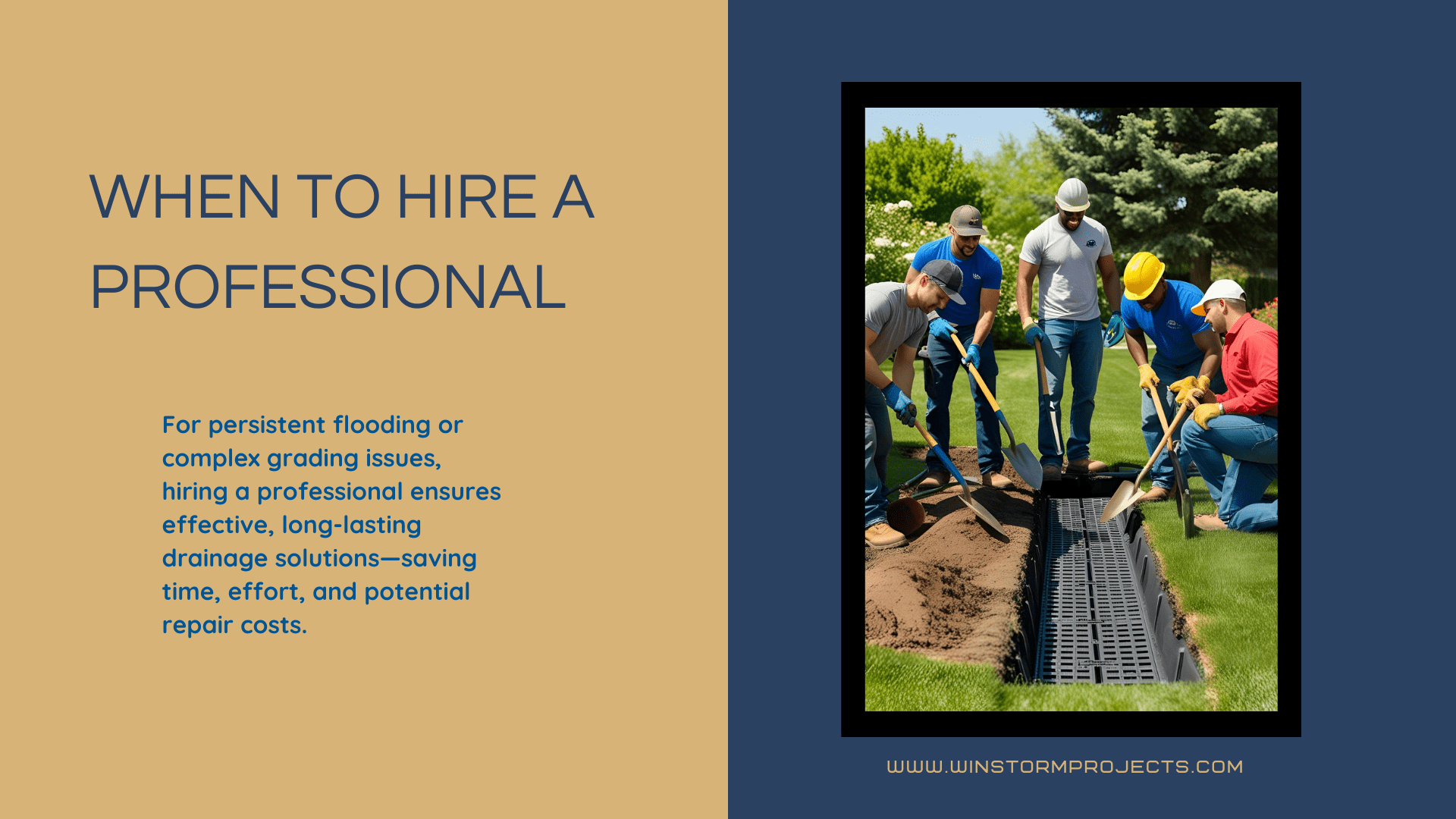
Preventative Measures for Better Yard Drainage
Regular Maintenance Tips
- Inspect gutters and downspouts to prevent blockages.
- Check drainage systems seasonally for clogs.
- Monitor yard grading to ensure slopes remain effective.
Landscaping Strategies for Better Drainage
- Use swales (shallow ditches) to direct water flow.
- Plant deep-rooted native species to absorb excess moisture.
- Apply gravel or mulch in problem areas to prevent erosion.
Final Thoughts
A well-drained yard enhances your home’s appearance, prevents damage, and makes outdoor spaces more enjoyable. Minor issues can often be fixed with DIY solutions, but severe drainage problems are best left to professionals.
If persistent flooding is affecting your property, Winstorm’s drainage experts in Guelph and Kitchener offer tailored solutions to keep your yard dry year-round.
Frequently Asked Questions
What are the most common causes of yard drainage issues?
Poor grading, heavy clay soil, clogged drains, and excessive rainfall contribute to drainage problems.
What’s the best way to prevent water from pooling in my yard?
Improving grading, installing French drains, and adding soil amendments can prevent standing water.
How much does a professional drainage solution cost?
Basic solutions like grading or French drains range from $1,500–$5,000, while complex systems like sump pumps can cost over $10,000.
Which drainage solution works best for heavy rain?
A combination of French drains, channel drains, and proper grading provides the most effective solution.
Is regrading my yard better than installing a drainage system?
Regrading is a crucial first step, but a drainage system may still be necessary for long-term effectiveness.
